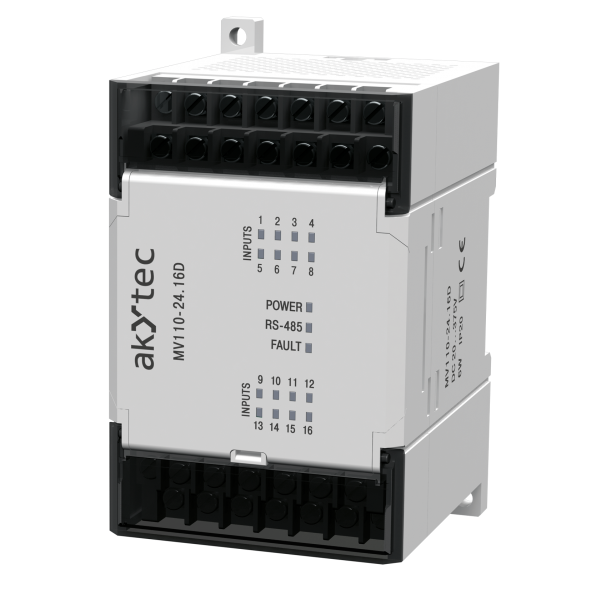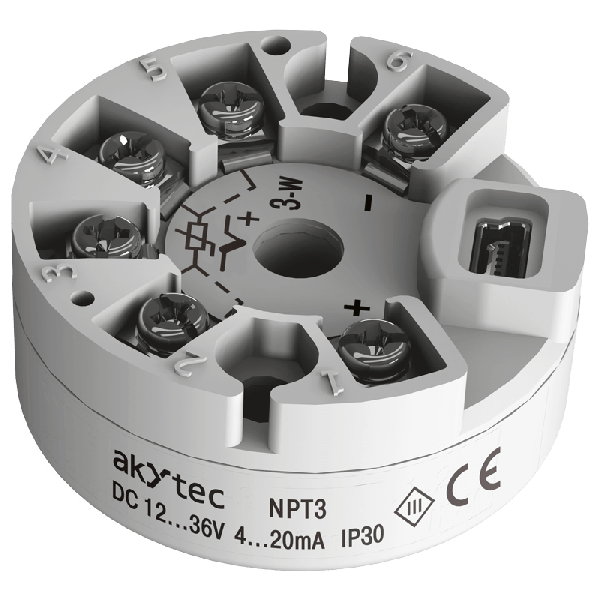Hello! This is the second article in the "What to Choose?" series. Today, we will discuss what a temperature transmitter is, why it is needed, and when it is more convenient to use modules with universal analog inputs instead of a temperature transmitter. We will explore the advantages and disadvantages of each option, as well as their applications in centralized and decentralized systems.
What is a temperature transmitter and why is it needed?
Temperature transmitters are designed to convert resistance temperature detector (RTD) and thermocouple (TC) signals into unified current (4-20 mA) or voltage (0(1)-10 VDC) signals. Signal unification allows to reduce the cost of special cables for thermocouples, eliminate the influence of electromagnetic interference, simplify the connection of sensors to PLC, increase the length of communication between the sensor and the measuring device.
- To connect thermocouples to measuring devices and ensure measurement accuracy, special cables are used, which are made of the same alloys as the thermocouples themselves, e.g. types K, J, T and etc.. They are considerably more expensive than ordinary copper cables used for 4-20 mA or 0-10 V communication lines.
- The non-normalized signal at the RTD or TC output is subject to various interferences that introduce errors into the process. Temperature transmitter filters out the interference. Standard filtered signals provide more accurate and stable data, which is critical for important process applications.
|
DEVICE |
TYPE OF OUTPUT SIGNAL |
SIGNAL APPEARANCE |

Temperature transmitter |
4-20 mA |
 |

TC or RTD |
Ω, mV |
 |
- Not all PLCs and I/O modules support direct TC or RTD connection, but almost all devices support standard 4-20 mA or 0-10 V signals.
- Thermocouples and RTDs have limitations on the length of the communication line (TC up to 20 meters, RTD up to 100 meters). The use of temperature transmitter allows to increase the communication length up to 800 meters.
There are two modifications of temperature transmitters in akYtec catalogue: NPT3 and NPT4. The main difference between these devices is the mounting option: NPT3 is mounted inside the sensor with special enclosure, while NPT4 is mounted on a DIN rail in the cabinet. In situations where the sensor is exposed to extreme temperatures, it is better to use the remote NPT4, as the NPT3 has a limited operating temperature range (-40...+85 °C).
|
DEVICE |
ELECTRICAL CONNECTIONS |

NPT3 |
 |

NPT4 |
 |
Having learnt the peculiarities of the temperature transmitter, let's move on to the second part of our article.
I/O MODULES vs TEMPERATURE TRANSMITTER
Consider a situation where there are a large number of sensors (50-100 or more) spread over different locations in a production facility. Installing a PLC at each location is too costly and inefficient, and running communication lines a long distance from each sensor to a central PLC increases data errors due to interference.
Is it convenient to use temperature transmitters in this situation? Is there a way to avoid running a cable to the PLC from each sensor?
This problem can be solved by using remote input modules with universal analogue inputs, placed near the sensor group.
Using akYtec modules with universal analogue inputs will simplify the automation system, make it more flexible and scalable, reduce cabling costs and eliminate the need for temperature transmitters.

The akYtec I/O modules are categorized into two series Mx110 with RS485 and Mx210 with Ethernet. In each series there are modules with universal analogue inputs: MV110-24.8A and MV210-101, to which up to eight TCs or RTDs can be connected directly.
|
DEVICE |
INTERFACE & |
SPEED |
DISTANCE |
SIGNAL TYPE |

MV110-24.8A |
RS485
|
Up to 115200 bit/s |
Up to 1200 m |
RTD, TC, 0-5 mA, |

MV210-101 |
Ethernet
|
Up to 100 Mbit/s |
Up to 100 m |
RTD, TC, 0-5 mA, |
Comparison of main parameters of modules and temperature transmitter
|
PARAMETER |
MV210-101 |
MV110-24.8A |
NPT3 |
NPT4 |
|
Application |
Complex distributed automation systems with a large number of sensors |
Simple automation systems with a small number of sensors |
||
|
Flexibility and Scalability |
High |
High |
Low |
Low |
|
Configuration Complexity |
Medium |
Medium |
Low |
Low |
|
Group Configuration |
Yes |
Yes |
No |
No |
|
Interference Resistance |
High |
High |
Medium |
Medium |
|
ADC Resolution |
16-bit |
15-bit |
||
|
Communication Line Length to PLC |
Up to 100 meters |
Up to 1200 meters |
Up to 800 meters |
Up to 800 meters |
|
Data Logging |
Yes |
No |
No |
No |
|
4-Wire RTD Connection |
No |
No |
Yes |
Yes |
|
Cost (per channel) |
Medium |
Medium |
Low |
High |
Conclusion
The choice between the devices in this article will depend on the requirements and scale of your automation system.
The Mx110 and Mx210 modules are ideal for complex, multi-sensor environments requiring advanced communication and data logging. They offer versatility, scalability and high accuracy, although they can be more complex to set up.
Temperature Transmitters are better suited for simple applications with a small number of sensors where ease of use, low cost and compact size are important. Transmitters provide reliable and simple conversion of sensor signals to standard analogue signals.




